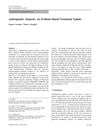Considering Quitting Topical Min Treatment 9/15/2025
The user is considering stopping topical minoxidil due to lack of improvement in hair growth and is exploring alternatives like oral minoxidil, topical finasteride, and tretinoin. They are hesitant about oral finasteride and dutasteride, and are open to trying oral minoxidil if available, despite concerns about potential heart-related side effects.
View this post in the Community →
Similar Community Posts Join
6 / 1000+ resultscommunity If you aren't happy with your results but haven't tried microneedling: why not?
Microneedling with minoxidil significantly boosts hair growth, even for non-responders to minoxidil alone. The routine includes a 1.5mm dermaroller weekly and minoxidil twice daily, with some users adding finasteride and tretinoin.

community 2025 Official beginner guide for “I’m losing my hair, what can I do?”
For hair loss, start with Finasteride, Minoxidil, Ketoconazole shampoo, and Microneedling. For severe cases, consider Dutasteride, oral Minoxidil, or hair transplants.

community 41/M Seeking Advice on Alternatives to Fin/Dut Due to Gyno
A 41-year-old South Asian individual feels hopeless about hair loss and cannot use oral finasteride or dutasteride due to existing gynecomastia. They are seeking advice on alternative treatments.
community Microneedling + topical minoxidil is the most underrated combo.
Microneedling with topical minoxidil is effective for hair regrowth, especially with finasteride. Users report fewer side effects compared to oral minoxidil.
community If dutesteride and oral minoxidil doesn’t work that’s it right?
A user is experiencing ongoing hair loss despite using 0.5mg dutasteride and 2.5mg oral minoxidil for several years and is seeking advice. Suggestions include ensuring correct diagnosis, checking for other health issues, considering finasteride, trying topical antiandrogens, and consulting a dermatologist.
community 25M 4 months Fin + oral Min keep hope
A 25-year-old male shared his hair loss journey, using finasteride and oral minoxidil, which improved his hair density and quality. He also addressed dermatitis with exfoliation and anti-dandruff shampoo, and emphasized the importance of a healthy scalp and lifestyle changes.
Related Research
6 / 1000+ results
research A Review of the Treatment of Male Pattern Hair Loss
Finasteride and minoxidil work best together for hair loss.

research Minoxidil: A Comprehensive Review
Minoxidil effectively treats hair loss, especially androgenetic alopecia, but needs more research for better understanding.

research Combination and Rotational Therapy in Androgenetic Alopecia
Using different hair loss treatments at various times can improve results and reduce side effects for people with chronic hair loss.

research Androgenetic Alopecia: An Evidence-Based Treatment Update
Effective treatments for male pattern baldness include oral finasteride and topical minoxidil, while topical minoxidil is best for female pattern baldness.

research Androgenetic Alopecia: A Review and Emerging Treatments
Hair loss, known as Androgenetic Alopecia, is often caused by hormones and can be diagnosed using noninvasive techniques. Treatments include topical minoxidil and oral finasteride, with new treatments being explored. There may also be a link between this type of hair loss and heart disease risk.

research Treatments for Androgenetic Alopecia and Alopecia Areata
Minoxidil and finasteride treat hair loss; more research needed for other options.